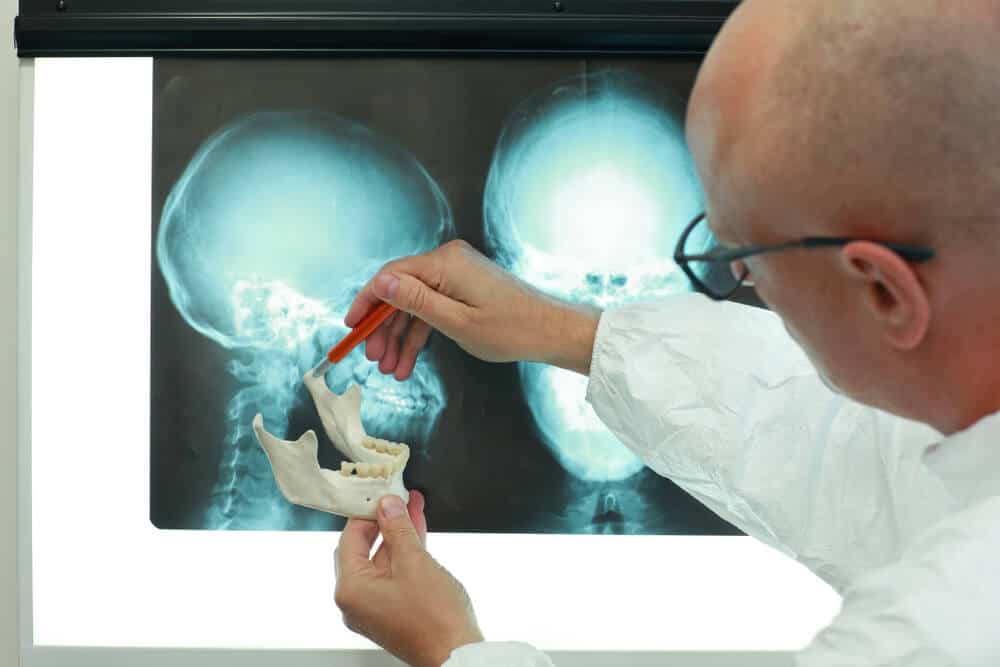Surgical orthodontics (orthognathic surgery) combines jaw surgery with braces or aligners to correct severe bite and jaw problems that cannot be fixed with orthodontics alone. At Valley Orthodontics in Wasilla, AK, we work closely with trusted oral and maxillofacial surgeons to help patients improve function, facial balance, and long-term oral health.
When Is Surgical Orthodontics Recommended?
You may be a candidate for surgical orthodontics if you have one or more of the following:
-
Significant jaw misalignment or malocclusion
-
Difficulty chewing, biting, or swallowing
-
Chronic jaw pain, tension, or fatigue
-
Speech issues related to jaw position
-
Noticeable facial asymmetry or imbalance
-
Obstructive sleep apnea related to jaw structure
If these concerns are present, braces or aligners alone may not be enough to correct the underlying skeletal problem.
Why Surgical Orthodontics Matters
Surgical orthodontics is used when the bones of the jaws are out of position, not just the teeth. Treating these issues can:
-
Improve chewing efficiency and overall bite function
-
Make speaking and swallowing more comfortable
-
Help address airway or breathing issues related to jaw position
-
Reduce strain on the jaw joints and facial muscles
-
Create a more balanced, harmonious facial appearance
By correcting the jaw position and then fine-tuning the teeth with orthodontics, we can provide both functional and aesthetic improvement that lasts.
What Is the Surgical Orthodontic Treatment Process?
At Valley Orthodontics, your surgical orthodontic care is carefully planned and coordinated:
-
Initial Consultation: We review your medical and dental history, examine your bite and jaw, and discuss your goals and concerns.
-
Diagnostic Records: X-rays, photographs, and digital models are taken to plan both the orthodontic and surgical phases.
-
Pre-Surgical Orthodontics: Braces or clear aligners are used to position the teeth so they will fit correctly after surgery.
-
Jaw Surgery With an Oral Surgeon: An oral and maxillofacial surgeon performs the corrective jaw surgery in a hospital or surgery center under general anesthesia.
-
Post Surgical Orthodontics: After healing, we continue orthodontic treatment to refine your bite and smile.
-
Retention and Follow Up: Once treatment is complete, braces are removed and retainers are provided to help maintain your results.

Can Surgical Orthodontic Problems Be Prevented?
In some cases, early orthodontic evaluation in childhood can guide jaw growth and reduce the need for surgery later. However, many skeletal jaw discrepancies are inherited or fully noticed only once growth is complete.
You can support long term stability and comfort by:
-
Maintaining regular dental and orthodontic checkups
-
Following all treatment instructions and appointment schedules
-
Practicing excellent home care to keep teeth and gums healthy before and after surgery
Long-Term Benefits of Surgical Orthodontics
Patients who complete surgical orthodontic treatment often report:
-
Easier, more comfortable chewing and biting
-
Reduced jaw pain, tension, or fatigue
-
Improved speech clarity in some cases
-
Better facial balance and profile
-
Increased confidence in both appearance and function
Surgical orthodontics is a significant commitment, but the long-term improvement in comfort, function, and appearance can be life-changing.
Start With a Surgical Orthodontics Consultation
If you have concerns about your bite, jaw alignment, or facial balance, our team at Valley Orthodontics in Wasilla, AK can help you understand your options. Contact us today to schedule a consultation and learn whether surgical orthodontics is the right path to a more comfortable, functional, and confident smile.
Frequently Asked Questions
Curious about treatment? Many patients share the same questions. Click any topic below to get quick, helpful answers.
After a full exam, X rays, and bite analysis, your orthodontist will determine whether your concerns can be corrected with braces or aligners alone, or if the jaw position also needs to be changed with surgery.
Surgical orthodontics is generally recommended for patients whose jaw growth is complete, which is typically in late teens or adulthood. Before that, we may use growth guidance and orthodontics to manage developing issues.
Most patients can return to school or work activities within several weeks, depending on the procedure. Temporary swelling, soreness, and a modified diet are expected. Your surgeon will give specific instructions to support healing.
Yes. Surgery corrects the jaw position, and braces or aligners are used afterward to fine tune the bite and align the teeth precisely. This phase is important for achieving a stable, comfortable result.
Orthognathic surgery has been performed safely for many years by trained oral and maxillofacial surgeons. As with any major surgery, there are risks, but careful planning, modern techniques, and close follow up help reduce complications.
